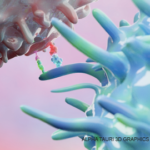
Each year, I spend one month as the attending on the general medicine service. While I am active clinically as a rheumatologist, it has been more than 30 years since I was a house officer and served on the front lines to treat pancreatitis, cirrhosis, or lung cancer. I may be a Duke Marine, but when it comes to inpatient work, my status is more appropriately inactive reserve.
I always have a great time as attending; any anxiety about clinical rustiness is far outweighed by the excitement and satisfaction that comes from caring for the very sick. I also relish team camaraderie. The practice of medicine always involves a team, but the ward team is unique. It unites novices and experts, students and teachers, young and old. While the ward team members are the age of my children, they will as likely teach me as I will them.
The current pace of medical advance is fast if not frantic and, in the year that will pass between my stints as ward attending, there will be a torrent of new drugs, imaging studies, and treatment approaches. There is no way that anyone can keep up with the pace of innovation and I long ago learned that it is better to admit ignorance than to bluff your way through rounds.
This year on rounds, I was blindsided by a term I never heard before. The term is “sniff.”
The Mysterious Sniff
I learned about “sniff” on my first day attending as I reviewed patients with the two admitting teams. We were sitting in a crowded and messy workroom—similar to the one I toiled in as an intern except it has five flat-screen computers and an espresso machine. Even working just 80 hours a week, house officers apparently need caffeine to keep them going.
Ward teams are usually named by color; let’s call this group Orange 1. It was a typical team—a quiet and earnest medical student, an overworked but cheerful intern, and a junior assistant resident with the swagger that the rite of internship can bring. As I talked with Orange 1, the Orange 2 group worked at their computers, the air filled with a barrage of clicking as they banged at keyboards with blazing speed.
The resident on Orange 1 was “running” the patient list, reducing each person to two or three sentences so that I could make a recommendation or erudite comment. When we got to a patient we can call Mr. Jones, the resident issued a staccato summary: “72-year-old man with recent stroke, MI, and GI bleed. We are trying to get him a ‘sniff.’ ”
I startled. I had never before heard the term “sniff.” Although my hospital has discouraged abbreviations and acronyms, they nevertheless persist and, if anything, proliferate at a furious rate. Everyone is too pressed for time to spell out diabetes mellitus rather than popping in DM with two quick keystrokes. Who has the luxury of time to say “an ST elevation myocardial infarction” rather than the more familiar and benign sounding “STEMI”? STEMI sounds like a cute name for a girl rather than a catastrophic life-threatening event.
When you round with a new team, it is always good to start off with a winner, a case where—as the attending—you can show your stuff. The best circumstance is to have a case within your clinical bailiwick. With lupus, I could shine, lecturing on recent articles and asking the house staff questions for which I know the answer.
But I did not know what a sniff was and being flummoxed is no way to start as the attending.
I wracked my brain to see if I had ever heard of a sniff. Was it a class of drugs like an ARB (angiotensin receptor blocker)? Or was it type of diagnostic test like a cath or a therapeutic intervention like TIPS (transjugular intrahepatic portosystemic shunt)?
My silence was uneasy as I conjured possibilities for sniff. Maybe it was a sinus node fragmentator or frumtanator or something like. Alas, I could not come up with anything that corresponded to sniff.
Ten minutes into my attending work, I was ready to go down in defeat, stumped by an acronym the preciousness of time had forced into use.
My face desolate, shaking my head, I asked, “What is a ‘sniff’?”
“Oh,” the resident said, smiling in a kind but indulgent way, “a ‘sniff’ is a skilled nursing facility.”
A light went off in my head as I put two and two together. It was clear that sniff was for a pronunciation of SNF.
I was tempted to expatiate on the importance of clear communication in medicine and the hazards of using abbreviations. I decided to accept a small setback, however, and not act like an old curmudgeon.
“The sniff is a good idea,” I said, sitting upright, and then added with just a little swagger in my voice, “Make sure the BUN and hematocrit are stable so that we can transfer him quickly. His length of stay is already too long.”
Alphabet Soup
I did well for about another 10 minutes when I had to ask what “HOCUM” was. That was an entity that I used to call IHSS (idiopathic hypertrophic subaortic stenosis); its new moniker is hypertrophic obstructive cardiomyopathy.
I get annoyed, embarrassed, and irked by my ignorance of so many aspects of today’s medicine. As they say, you could fill a textbook with what I don’t know. As a matter of fact, you could fill two. One is called Cecil Textbook of Medicine and other is called Harrison’s Manual of Medicine.
While my foibles on rounds can be amusing, there’s a serious side to what I do. In admitting ignorance, I’m trying to teach the house staff some lessons. Most important: if you don’t know something, ask for help. Others include don’t be proud, act with understanding, and be honest in the face of change.
The inpatient ward is a special environment that exists at the extreme edge of medical practice. Education starts there because it is best place to learn. The stakes are high; indeed, they are matters of life and death. Because the consequences are dire, mistakes are remembered, the recollection of serious error a spur to maturity.
The month on the ward gives me a reality check on what we, as physicians, know and what we don’t know. In looking at some recent events affecting rheumatology, I worry that some physicians are not heeding the lessons learned on the ward and are disregarding the limits on their knowledge.
In future issues, I will discuss this matter further and give you my own take on situations where asking for help could go a long way.
Dr. Pisetsky is physician editor of The Rheumatologist and professor of medicine and immunology at Duke University Medical Center in Durham, N.C.


